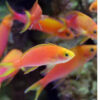Exploring the Relationship Between Dragons and Other Mythical Creatures in Chinese Mythology

Chinese mythology is rich with a diverse array of mythical creatures that symbolize various aspects of nature, life, and the cosmos. Among these, the dragon stands as the most revered and powerful symbol. However, alongside the mighty dragon, there are numerous other fascinating mythical beings that play significant roles in the stories, beliefs, and rituals of ancient China. These creatures, often possessing magical powers, offer a glimpse into the spiritual and philosophical worldview of the Chinese people. The interaction between dragons and these other mythical creatures is not only important in the context of individual legends but also reveals a deeper connection to Chinese culture’s understanding of balance, harmony, and the natural world.
In this article, we will explore the intricate relationships between dragons and other prominent mythical creatures in Chinese mythology. We will examine how these creatures interact with each other in various tales and how their symbolism complements the dragon’s omnipresent role as a symbol of power, wisdom, and cosmic order.
The Dragon: A Symbol of Cosmic Power
Before delving into the relationships between the dragon and other mythical creatures, it is essential to understand the role of the dragon in Chinese mythology. Dragons are viewed as majestic, benevolent creatures that symbolize strength, good fortune, and the balance of natural forces. They are often associated with water, rain, and weather, controlling the rivers, seas, and storms. Unlike Western dragons, which are commonly seen as destructive and evil, Chinese dragons represent positive and auspicious forces, ensuring prosperity and harmony.
Chinese dragons are often depicted as long, serpentine creatures with various animal-like features, including the antlers of a deer, the head of a camel, and the claws of an eagle. They are believed to be powerful and wise creatures, sometimes associated with the emperors of China, who were often regarded as descendants of dragons.
The Phoenix: The Symbiotic Pair of the Dragon
One of the most significant creatures that often appear alongside the dragon in Chinese mythology is the phoenix (also known as Fenghuang). The phoenix is a mythical bird that symbolizes peace, prosperity, and longevity, often paired with the dragon in Chinese culture. Together, the dragon and phoenix form a harmonious and complementary pair, representing the balance of opposites. While the dragon symbolizes power, strength, and masculinity, the phoenix represents grace, beauty, and femininity. The union of the two creatures is considered a symbol of harmony in the universe and a powerful omen of good fortune.
In many depictions, the dragon and the phoenix are seen circling each other in a dance of cosmic energy, symbolizing the dynamic forces of creation and the union of opposites. This pairing can be seen in art, folklore, and imperial symbolism, where the dragon and phoenix are often used to represent the Emperor and Empress, respectively. Their relationship is one of mutual respect and balance, with both creatures playing essential roles in maintaining cosmic order.
The Tiger: A Rival to the Dragon
While the dragon is generally seen as a symbol of supreme power and auspiciousness, the tiger (Hu in Chinese) represents another important force in Chinese mythology: strength, bravery, and ferocity. Tigers are often viewed as protectors against evil spirits and malevolent forces, with their fierce nature symbolizing courage and endurance. In contrast to the dragon’s graceful, flowing energy, the tiger embodies the raw, primal force of the earth and nature.
In Chinese folklore, the tiger is sometimes portrayed as a rival to the dragon, especially when it comes to controlling the balance of forces within nature. The tiger’s power lies in its fierce and untamed qualities, whereas the dragon’s power is rooted in its cosmic connection and ability to shape the forces of nature through wisdom and control. While the dragon is associated with the heavens, the tiger is often connected to the earth, with the two creatures symbolizing the tension between the heavens and the natural world.
In some myths, the tiger is said to guard the earth’s boundaries, ensuring that no one crosses the line between the mortal and divine realms. This sets up a natural opposition to the dragon, who often serves as the mediator between realms. Despite their differences, the dragon and the tiger can also work together in stories, as both creatures are essential for maintaining balance within the universe.
The Kirin: A Mythical Beast of Peace and Prosperity
Another prominent mythical creature in Chinese mythology that shares a complex relationship with the dragon is the Qilin (also known as the Kirin in Japanese and Korean cultures). The Qilin is a peaceful, gentle creature that symbolizes good fortune, prosperity, and the wise governance of a just ruler. It is often depicted as a hybrid beast with the body of a deer, the hooves of a horse, and the tail of an ox, with the head resembling a dragon’s.
The Qilin is a creature that embodies harmony and peace, and in Chinese mythology, it is often said to appear during times of great moral righteousness or to herald the birth of a wise ruler. As such, it is closely tied to the dragon, symbolizing the ideal balance between power and virtue. Whereas the dragon represents the forceful energies of creation and destruction, the Qilin represents the gentle aspects of life—peace, prosperity, and justice.
In certain legends, the Qilin and the dragon are said to work together to maintain the cosmic balance. The Qilin’s gentle nature complements the dragon’s strength, and together they are believed to ensure the well-being of the nation and its people. The Qilin also shares some of the dragon’s ability to communicate with the divine, and in some myths, it is said that the Qilin carries messages from the heavens, just as the dragon is believed to control the flow of water and weather from above.
The Snake: The Dragon’s Ancient Ancestor
The snake, or She (蛇), is another creature that is closely linked to the dragon in Chinese mythology. It is believed that the dragon evolved from ancient serpentine creatures, and in some versions of Chinese creation myths, the dragon is depicted as a giant snake-like creature that rose to prominence as it ascended to the heavens. In this sense, the snake can be seen as the dragon’s ancestor, and its symbolism often overlaps with that of the dragon in certain legends.
Both creatures share similar qualities, such as their elongated, serpentine bodies and their connection to water and the earth. However, the snake’s role in Chinese mythology is more closely tied to the earth, while the dragon represents a more celestial force. The snake is often associated with fertility and the cycles of life and death, as it sheds its skin, symbolizing renewal and transformation.
In some stories, snakes are depicted as guardians of hidden knowledge and power, much like the dragon. They are also seen as creatures of great wisdom and insight, capable of transforming themselves into dragons when they attain enough power and knowledge. In this way, the snake serves as a precursor to the dragon, representing the potential for transformation and ascension to a higher plane of existence.
The Tortoise: A Symbol of Longevity and Stability
In addition to the more dynamic mythical creatures associated with the dragon, the tortoise (or Gui) plays a significant role in Chinese mythology as a symbol of longevity, stability, and protection. The tortoise is often depicted as carrying the weight of the world on its back, symbolizing the earth’s stability and endurance. It is one of the Four Sacred Creatures in Chinese mythology, along with the dragon, phoenix, and tiger.
The tortoise and dragon are sometimes depicted together in mythological stories, where the tortoise’s steadfastness complements the dragon’s powerful and volatile nature. While the dragon brings dynamic change and energy, the tortoise provides the grounding force of stability. The tortoise’s role in Chinese mythology is often one of maintaining balance and protection, ensuring that the dragon’s power is kept in check and directed toward positive ends.
Conclusion: A Unified Mythical Cosmos
The relationships between dragons and other mythical creatures in Chinese mythology reflect the deep philosophical and spiritual concepts that have shaped Chinese culture for millennia. Each mythical creature embodies specific aspects of nature, life, and the cosmos, and their interactions serve to maintain a balance between different forces.
The dragon, as the most powerful and revered creature, is the central figure in many of these relationships. However, its connections to creatures like the phoenix, tiger, Qilin, snake, and tortoise reveal a complex, dynamic interplay between strength, wisdom, stability, and transformation. Together, these creatures create a mythological cosmos in which harmony, balance, and the forces of nature are ever-changing yet interconnected.
Through these stories, we gain insight into the Chinese worldview, in which all things are seen as interrelated and in constant flux, with mythical creatures serving as both symbols and agents of cosmic change. The dragon’s relationship with other mythical beings highlights the importance of cooperation, balance, and the continuous dance between opposing forces in the universe. Ultimately, these creatures embody the values of respect, humility, and the pursuit of wisdom—qualities that are central to Chinese mythology and culture.

